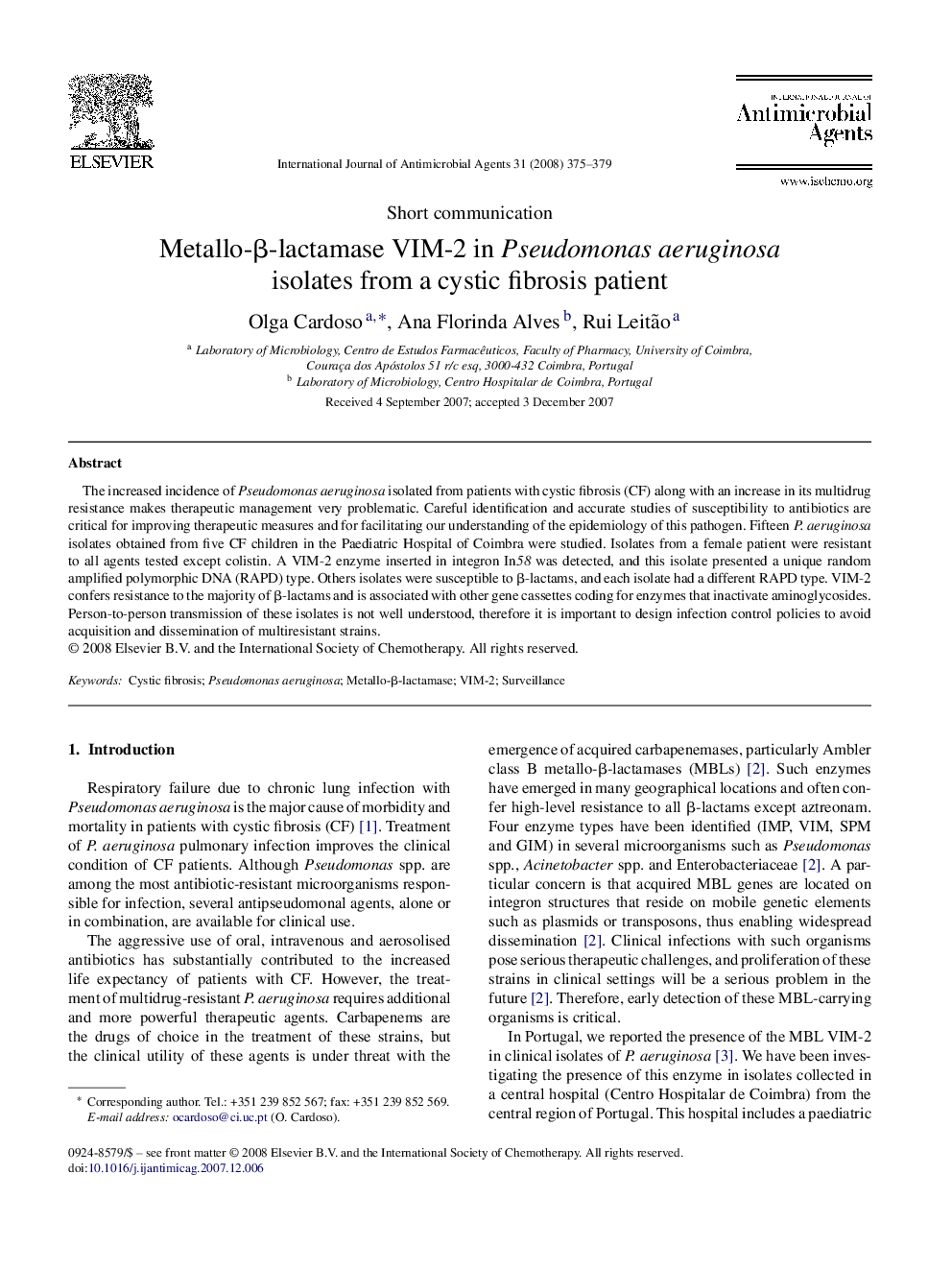| Article ID | Journal | Published Year | Pages | File Type |
|---|---|---|---|---|
| 3360648 | International Journal of Antimicrobial Agents | 2008 | 5 Pages |
The increased incidence of Pseudomonas aeruginosa isolated from patients with cystic fibrosis (CF) along with an increase in its multidrug resistance makes therapeutic management very problematic. Careful identification and accurate studies of susceptibility to antibiotics are critical for improving therapeutic measures and for facilitating our understanding of the epidemiology of this pathogen. Fifteen P. aeruginosa isolates obtained from five CF children in the Paediatric Hospital of Coimbra were studied. Isolates from a female patient were resistant to all agents tested except colistin. A VIM-2 enzyme inserted in integron In58 was detected, and this isolate presented a unique random amplified polymorphic DNA (RAPD) type. Others isolates were susceptible to β-lactams, and each isolate had a different RAPD type. VIM-2 confers resistance to the majority of β-lactams and is associated with other gene cassettes coding for enzymes that inactivate aminoglycosides. Person-to-person transmission of these isolates is not well understood, therefore it is important to design infection control policies to avoid acquisition and dissemination of multiresistant strains.
